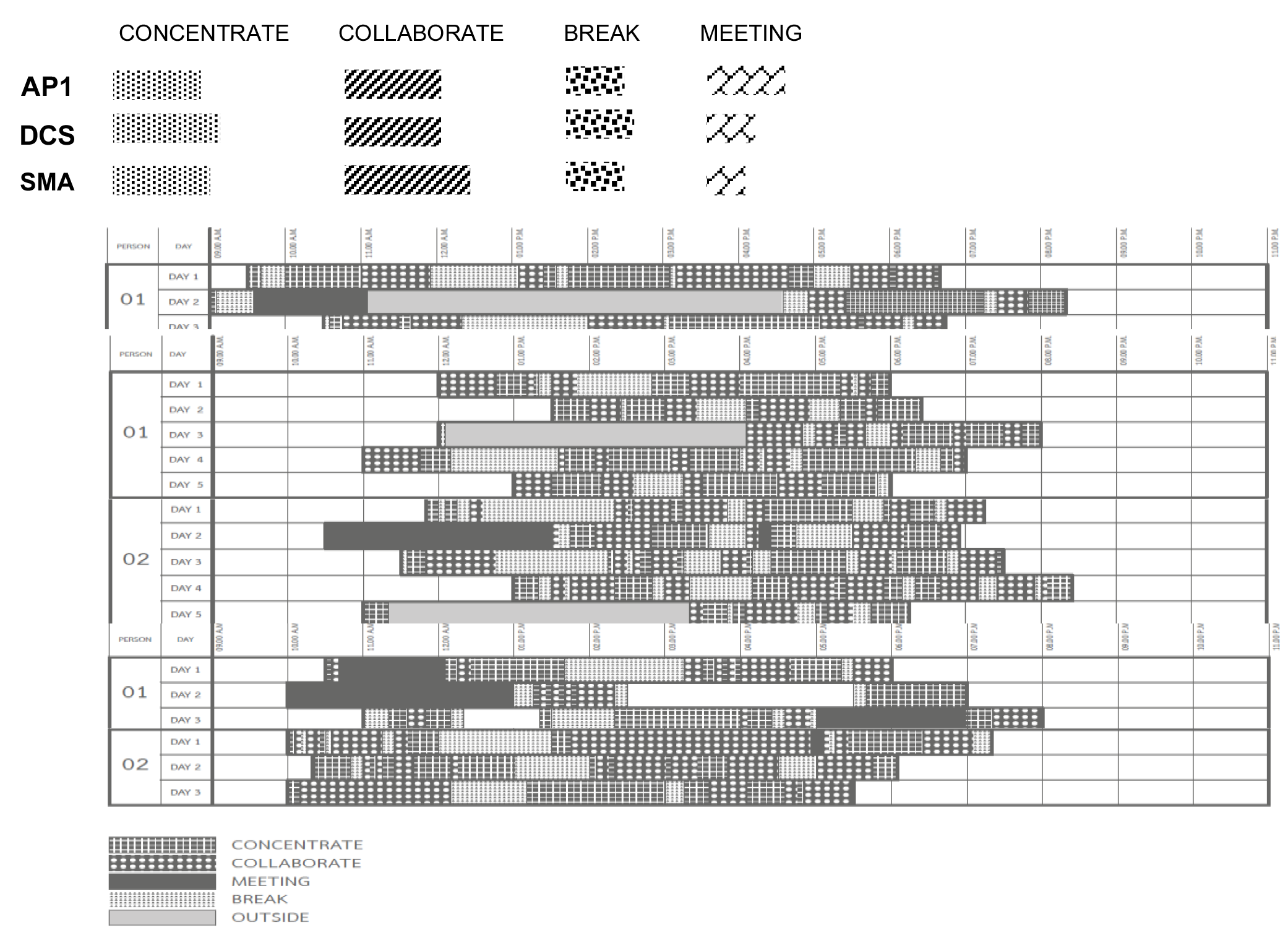Spatial Behavior in Creative Workplace: Mapping Creative and Innovative Behavior in Office Environment
Main Article Content
Abstract
This research aims to investigate the physical characteristics that encourage people to use creativity and create innovation. Based on the physical analysis of eight highly creative offices and the observation of work behavior of 15 creative workers throughout 58 working days, the research finds open plan layout are being used in every offices. The designers have the highest concentrated working behavior followed by col-laborative behaviors of 2-3 designers, both occurs mainly in the workstation area. Design offices can be cat-egorized into 3 groups according to the behavior of designers: 1) the office that emphasized on high level of work concentration; 2) the office that emphasized on consultations and collaboration among employees; 3) the office that emphasized on break and relaxation. The key to creating a supportive environment for creative work processes and create innovation is to optimize office space planning that fosters the concentration of work and collaborative work.
Downloads
Article Details

This work is licensed under a Creative Commons Attribution-NonCommercial-NoDerivatives 4.0 International License.
All material is licensed under the terms of the Creative Commons Attribution 4.0 International (CC-BY-NC-ND 4.0) License, unless otherwise stated. As such, authors are free to share, copy, and redistribute the material in any medium or format. The authors must give appropriate credit, provide a link to the license, and indicate if changes were made. The authors may do so in any reasonable manner, but not in any way that suggests the licensor endorses you or your use. The authors may not use the material for commercial purposes. If the authors remix, transform, or build upon the material, they may not distribute the modified material, unless permission is obtained from JARS. Final, accepted versions of the paper may be posted on third party repositories, provided appropriate acknowledgement to the original source is clearly noted.
References
American Society of Interior Designers [ASID]. (1998). Productive workplaces: How design increases productivity: Expert insights. Retrieved from https://www.hatchdesign.ca/wp-content/uploads/2011/12/productive_workplaces_whitepaper1.pdf.
Becker, F. (2007). Organizational ecology and knowledge networks. California Management Review, 49(2), 42-61.
Becker, F., & Sims, W. (2001). Offices that work: Balancing communication, flexibility and cost. Ithaca. New York: Cornell University International Workplace Studies Program.Boeddrich, H. J. (2004). Ideas in the workplace: A new approach towards organizing the fuzzy front end of the innovation process. Creativity and Innovation Management, 13(4), 274-285.
Ceylan, C., Dul J., & Aytac, S. (2008). Can the office environment stimulate a manager’s creativity?. Human Factors and Ergonomics in Manufacturing, 18(6), 589-602. DOI: 10.1002/hfm.20128.
Davenport, T. H., & Prusac, G. J. B. (2002). Knowledge management case book. 2nd ed. Germany: Publicis Corporate Publishing.
Davis, T. V. (1984). The influence of the physical environment in offices. The Academy of Management Review, 9(2), 271-283. Retrieved from http://www.jstor.org/stable/2584400.
Duffy, F. (1997). The new office. London, US.: Conran Octopus Limited.
Dul, J., & Ceylan, C. (2011).Work environments for employee creativity. Ergonomics, 54(1), 12-20. DOI: 10.1080/00140139.2010.542833.
Fayard, A.-L., & Weeks, J. (2014). Who moved my cube? (pp.91-99). In Harvard Business Review OnPoint, Collaboration that Works. Brighton, MA, USA.: Harvard Business Publishing.
Gensler. (2013). U.S. Workplace survey (Research report). San Francisco: Author.
Kallio, T. J., Kallio K. M., & Blomberg, A. J. (2015). Physical space, culture and organizational creativity – a longitudinal study. Facilities, 33(5/6), 389-411.
Kopec, D. (2012). Environmental psychology for design. New York: Fairchild Publications.
Kratzer, J. Leenders, R., & Engelen, J. (2006). Team polarity and creative performance in innovation teams. Creativity and innovation management, 15(1), 96-104. DOI: 10.1111/j.1467-8691.2006.00372.x.
Kristensen, T. (2004). The physical context of creativity. Creativity and Innovation Management, 13(2), 89-96.
Lehrer, J. (2012). IMAGINE: How creativity works. New York: Houghton Mifflin Harcourt.
Martens, Y. (2008). Unlocking creativity with the physical workplace (Research report). Netherlands: Delft University of Technology.
Martens, Y. (2011). Creative workplace: instrumental and symbolic support for creativity. Facilities, 29(1/2), 63-79. DOI: 10.1108/02632771111101331.
Mathissen, G. E., & Einarsen, S. (2004). A review assessing creative and innovative environments within organisations. Creative Research Journal, 16(1), 119-140.
McCoy, J. M., & Evans, G. W. (2002). The potential role of the physical environment in fostering creativity. Creativity Research Journal. 14(3-4), 409-426, DOI: 10.1207/S15326934CRJ1434_11.
Meister, J. C., & Willyerd, K. (2010). The 2020 workplace: How innovative companies attract, develop, and keep tomorrow’s employees today. New York: An Imprint of Harper Collins Publishers.
Moultrie, J., Nilsson, M., Dissel, M., Haner, U. E., Janssen, S., & Van der Lugt, R., (2007). Innovation spaces: towards a framework for understanding the role of the physical environment in innovation. Creativity and Innovation Management, 16(1), 53-65.
Stryker, J. B. (2004). Designing the workplace to promote communication: The effect of collaboration opportunity on face-to-face communication in R&D project teams. Unpublished Doctor of Philosophy. Rutgers, The State University of New Jersey, New Jersey.
Toker, U., & Gray, D. O. (2008). Innovation spaces: Workspace planning and innovation in U.S. university research centers. Research Policy, 37, 309–329. DOI: 10.1016/j.respol.2007.09.
Van der Voordt, T. J. M. (2004). Productivity and employee satisfaction in flexible workplaces. Journal of Corporate Real Estate, 6(2), 133 – 148.


